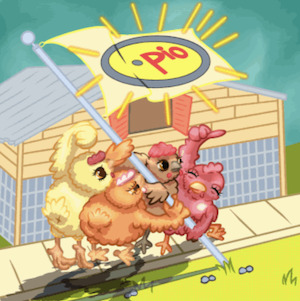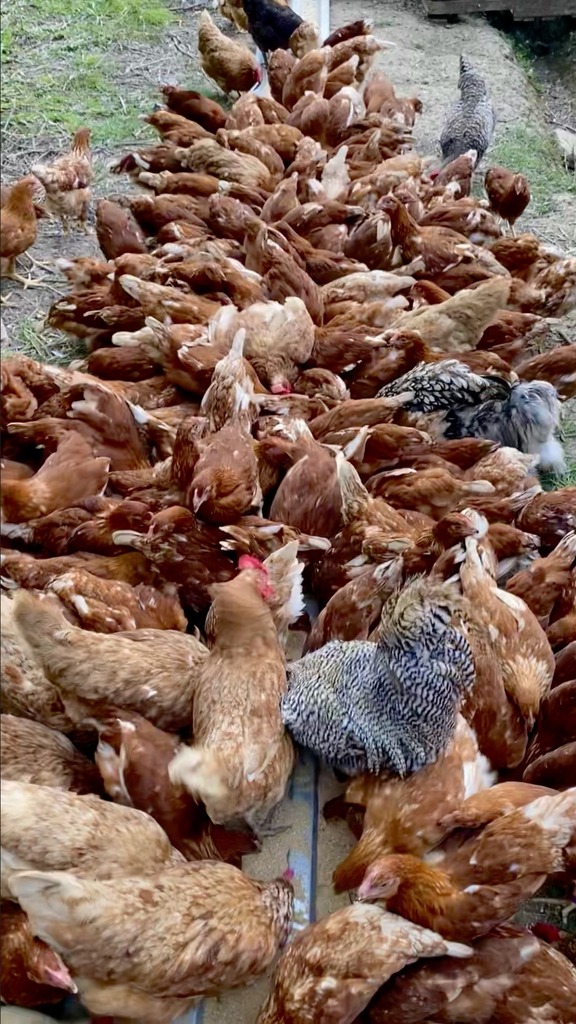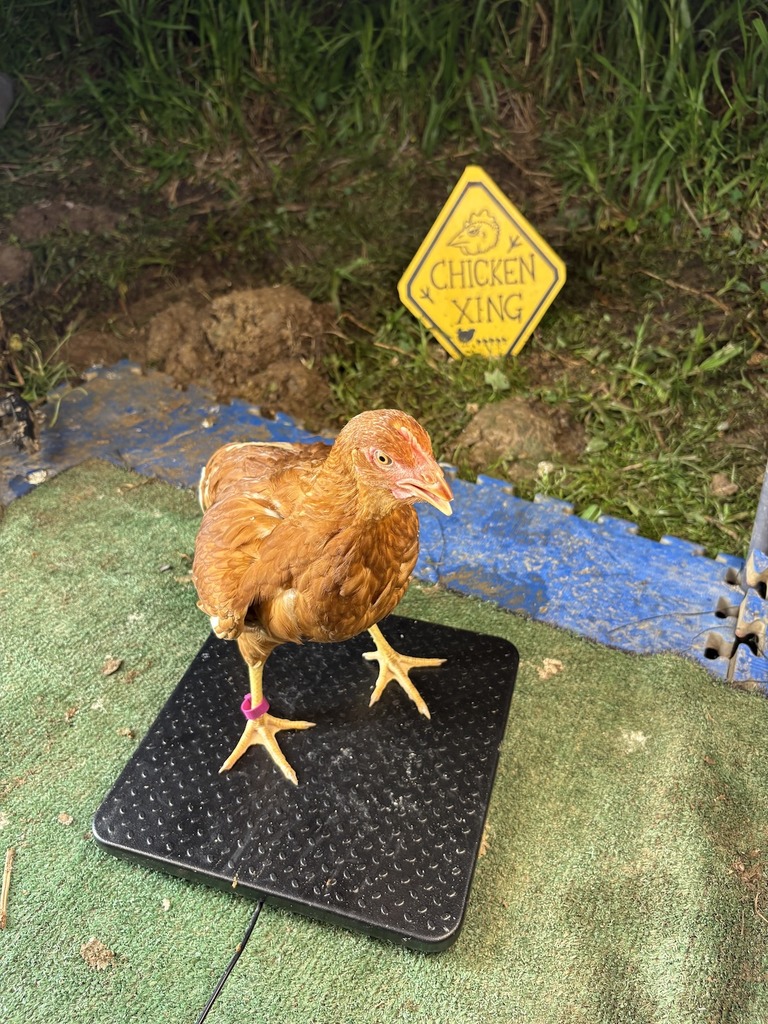Are all eggs created equal? Not quite. The way hens are raised can change the ethics, nutrition, and sustainability of egg production. Chicken farming methods vary a lot, from cramped factory farms to more humane and sustainable ways.
The difference is in how hens are treated and where they live. Pasture raised hens are often seen as a better choice. But what does this mean for people in Puerto Rico and elsewhere?
Key Takeaways
- The method of chicken farming affects the ethics of egg production.
- Pasture raised eggs are considered a more humane option.
- Sustainable chicken farming practices have a lower environmental impact.
- Consumer choices can influence the demand for ethical egg production.
- Understanding chicken farming methods can inform healthier dietary choices.
The Egg Dilemma: Not All Eggs Are Created Equal
Not all eggs are the same. They come from different farming methods, each with its own story. The way hens are raised impacts the eggs’ nutritional value and the ethics and sustainability of farming.
The Hidden Truth Behind Your Breakfast
Cracking an egg opens more than just a simple breakfast. It reveals the hen’s living conditions. The treatment and living conditions of hens vary greatly depending on the farming method.
How Farming Methods Impact Ethics, Nutrition, and Sustainability
Farming methods shape the welfare of hens, the quality of eggs, and the farm’s environmental impact. For example, cage-free and free-range systems give hens more room to roam than caged systems.
| Farming Method | Animal Welfare | Nutritional Content | Sustainability |
|---|---|---|---|
| Caged | Limited movement | Lower omega-3 fatty acids | Higher environmental impact |
| Cage-Free | Better movement | Potential for higher omega-3 | Variable environmental impact |
| Free-Range | Access to outdoors | Higher omega-3 fatty acids | More sustainable |
Why Understanding Egg Labels Matters
It’s key to understand egg labels for better choices. Labels like “cage-free,” “free-range,” and “organic” tell us about the farming. But, their meanings can differ, so knowing what they mean is crucial.
By picking eggs from methods that care for hens and the environment, we support a better food system. This choice promotes ethics and sustainability in farming.
The Dark Reality of Caged Egg Production
Behind the eggs on your breakfast plate lies a harsh reality: the confinement of hens in battery cages. This practice is widespread in industrial egg production. It raises significant concerns about animal welfare and environmental impact.
Battery Cage Systems Explained
Battery cage systems are designed to maximize egg production while minimizing costs. Hens are housed in small wire cages, often in multiple tiers, with limited space to move. This confinement can lead to severe welfare issues, including stress, bone fractures, and feather pecking.
The Welfare Concerns of Confined Hens
The welfare of hens in battery cage systems is a significant concern. The lack of space and natural behavior expression leads to physical and psychological distress. Chicken welfare standards are often not met in these systems, resulting in inhumane conditions.
Environmental and Health Implications
The environmental and health implications of caged egg production are substantial. Confined hen welfare is compromised, and the risk of disease prevalence increases. Disease control measures often involve the use of antibiotics, contributing to antibiotic resistance.
Disease Prevalence in Confined Operations
In confined operations, the close quarters of hens in battery cages facilitate the spread of disease. This can lead to outbreaks that are challenging to control, further compromising the welfare of the hens.
Antibiotic Overuse Concerns
The overuse of antibiotics in confined hen operations is a significant public health concern. It contributes to the development of antibiotic-resistant bacteria, posing risks to human health.
Cage-Free: A Small Step Forward or Clever Marketing?
“Cage-free” sounds like a good thing, but it’s more complicated. Not having cages doesn’t always mean hens live better.
What “Cage-Free” Actually Means
Hens in cage-free systems can move around indoors. But, they might not have enough room to do natural things. Some see it as a humane choice, but it’s not always true.
The Overcrowding Problem
Cage-free farming often means hens are crowded together. They have little space, which can cause stress and health issues.
“The welfare of hens in cage-free systems is a complex issue, influenced by factors such as stocking density and the provision of enrichment activities.” –
Indoor Confinement Realities
Being indoors can harm hens because of bad air and limited natural behaviors.
Air Quality Issues
Indoor places can get very smelly from manure. This is bad for hens’ health.
Limited Natural Behaviors
Without the outdoors, hens can’t forage or do other natural things. This might hurt their well-being.
| Aspect | Cage-Free | Caged |
|---|---|---|
| Movement | Allowed to move indoors | Confined to cages |
| Natural Behaviors | Limited opportunity | No opportunity |
| Air Quality | Potential issues | Generally controlled |
The “cage-free” label is complex, with both good and bad sides for hens. Knowing this helps us make better choices.
Free-Range Farming: Promises vs. Reality

Free-range farming is seen as a kinder option, but it’s not always as it seems. The term ‘free-range’ suggests better living conditions for animals. Yet, the real situation can differ a lot.
Minimum Requirements for Certification
To be called “free-range,” farms must let hens outside. But, the rules for this label are not strict. For example, the US Department of Agriculture (USDA) says hens must go outside. But, it doesn’t say how long or what kind of space they need.
The Truth About Outdoor Access
Many free-range farms don’t give hens much room outside. Some hens might get to a small porch or a covered area. The number of hens in these spots can be too high, causing stress and overcrowding.
Common Misconceptions Among Consumers
People think free-range eggs come from hens that run around outside a lot. But, the truth is different. Knowing more about free-range farming helps people choose better.
| Label | Outdoor Access | Welfare Standards |
|---|---|---|
| Free-Range | Required, but quality varies | Better than caged, but not always ideal |
| Cage-Free | Not required | Varies, often overcrowded indoors |
| Pasture-Raised | Continuous access to outdoors | Generally higher welfare standards |
Understanding these labels helps people choose what they believe in. It lets them pick options that match their values and needs.
Organic Egg Production: Beyond the Label
Looking beyond the label is key to understanding organic egg farming. The term “organic” means certain farming practices are followed. But it doesn’t mean hens are treated well or get to go outside.
Organic Feed Requirements
Hens in organic egg production eat organic feed. This feed is free from GMOs and pesticides. It makes the eggs healthier and helps the environment.
Antibiotic and Hormone Restrictions
Organic eggs are made without antibiotics or hormones. This helps the hens stay healthy and happy. But it doesn’t mean they live in good conditions.
What Organic Certification Doesn’t Guarantee
Even with strict rules, organic certification has its limits. Two important things it doesn’t cover are:
- Space requirements for hens
- Outdoor access quality
Space Requirements
The space hens have can vary a lot. Some farms give them lots of room, while others might be too crowded.
Outdoor Access Quality
“Organic” doesn’t always mean hens get to go outside. The quality and amount of outdoor space can change a lot between farms.
| Certification | Feed Requirements | Antibiotics/Hormones | Space/Outdoor Access |
|---|---|---|---|
| Organic | Organic feed, no GMOs | No antibiotics or hormones | Variable space and outdoor access |
In conclusion, organic egg production has strict rules for feed and health. But it has limits when it comes to hen welfare and outdoor access.
The Gold Standard: Pasture Raised Eggs and Their Benefits

Pasture-raised eggs are a top choice for those who want ethical and nutritious eggs. These eggs come from hens that roam in open fields. This freedom can lead to eggs with more nutrients.
What Truly Pasture-Raised Means
Pasture-raised hens have real freedom to roam outdoors. They live in natural environments with grass, sunlight, and fresh air. This is very different from caged or cage-free systems.
Natural Chicken Behaviors in Open Fields
Hens raised on pasture show natural behaviors. They forage for insects, seeds, and plants. This improves their health and the eggs’ nutritional value.
Nutritional Advantages of Pasture-Raised Eggs
Pasture-raised eggs have many nutritional benefits. They have rich yolks and better fatty acid profiles. Two key benefits are:
Higher Omega-3 Content
Pasture-raised eggs have more omega-3 fatty acids. These are good for the heart and brain. So, these eggs are a healthier option.
Increased Vitamin Levels
These eggs also have more vitamins A and E, and antioxidants. The hens’ varied diet boosts these vitamins. This makes their eggs a nutritious choice.
| Nutritional Component | Pasture-Raised Eggs | Conventional Eggs |
|---|---|---|
| Omega-3 Fatty Acids | Higher Content | Lower Content |
| Vitamin A | Rich | Less Rich |
| Vitamin E | Higher Levels | Lower Levels |
In conclusion, pasture-raised eggs are great for animal welfare and nutrition. As people learn more about their food choices, demand for these eggs will grow.
Regenerative Poultry Farming: The Future of Egg Production
More people are thinking about the planet, and regenerative poultry farming is a green way to get eggs. It makes chickens happier and helps the environment too.
Principles of Regenerative Agriculture
Regenerative farming aims to make the soil better, increase biodiversity, and help ecosystems. For poultry, it means using nature to improve soil and cut down on harm to the environment.
Rotational Grazing Systems
Rotational grazing is a big part of regenerative poultry farming. It moves chickens around to let the land rest and grow better. This also lets chickens act naturally, making them happier.
Soil Health and Carbon Sequestration Benefits
Regenerative farming makes soil better by using natural manure instead of chemicals. This helps the soil hold more carbon, which fights climate change. Here’s how it helps the soil and the planet.
| Practice | Soil Health Benefit | Carbon Sequestration Impact |
|---|---|---|
| Rotational Grazing | Increased soil organic matter | Enhanced carbon sequestration |
| Manure Use | Natural fertilization | Improved soil carbon storage |
| Diverse Pasture | Biodiversity promotion | Increased ecosystem carbon |
Punto Pio: Puerto Rico’s Regenerative Farming Success Story
Punto Pio in Puerto Rico is a shining example of regenerative farming. They’ve made their soil healthier and created a rich ecosystem. This supports local wildlife and the community.
Regenerative poultry farming is a smart way to make eggs. It cares for animals, protects the environment, and helps people. By choosing these eggs, we can help make our food system better.
Decoding Egg Labels: Don’t Fall for Greenwashing
The world of egg labels is full of confusing terms and claims. As we care more about the ethics and sustainability of our food, it’s key to know what these labels mean.
Common Misleading Terms on Packaging
Some egg packaging terms can trick you. “Natural” doesn’t always mean the eggs come from hens raised on pasture or without antibiotics. “Farm-fresh” doesn’t mean better welfare or standards either.
Terms to watch out for:
- Free-roaming: Often used like “free-range,” but it’s not strictly defined.
- Vegetarian-fed: Means hens aren’t fed animal by-products, but it doesn’t talk about their living conditions.
Understanding Certification Standards
Certifications like “USDA Organic” or “Certified Humane” have clear rules. For example, “USDA Organic” means hens are raised without antibiotics or hormones and eat organic feed.
| Certification | Standards |
|---|---|
| USDA Organic | No antibiotics, hormones; organic feed |
| Certified Humane | Meets certain welfare standards, including space and living conditions |
Questions to Ask Your Egg Supplier
To get eggs that fit your standards, ask your supplier about their farming. You might ask, “Are hens raised on pasture?” or “What’s done for hen welfare?”
By getting to know egg labels and asking the right questions, we can make better choices. These choices support our values and help improve farming practices.
The True Cost of Eggs: Price vs. Value
Looking at the cost of eggs means more than just the price. It’s about the farming methods and values behind it. The real cost includes the ethics and sustainability of how the eggs are made.
Why Ethical Eggs Cost More
Eggs from farms that care for their hens and the environment cost more. This is because of better living conditions, quality feed, and more work. For example, farms that let hens roam outdoors or use rotational grazing spend more on land and labor.
Hidden Costs of Conventional Egg Production
Conventional egg production might seem cheaper at first. But it has hidden costs. These include harming the environment, health problems in hens, and poor working conditions for farmers. These issues affect not just the hens and farmers but also consumers and the planet.
| Farming Method | Cost Factors | Environmental Impact |
|---|---|---|
| Conventional | Low feed cost, high hen density | High pollution, resource depletion |
| Humane/Sustainable | Higher feed quality, outdoor access | Lower pollution, regenerative practices |
Long-term Benefits of Supporting Humane Farming
Choosing humane and sustainable egg farming has many benefits. It improves the lives of hens, makes eggs healthier, and helps the environment. By picking eggs from farms that care for animals and the planet, we support a better food system.
In summary, while ethical eggs might seem pricier, they offer great value. They ensure better animal care, environmental health, and nutritional quality. Understanding the true cost helps us make choices that align with our values.
Finding Ethical Eggs in Puerto Rico
If you’re searching for eggs from happy hens, Puerto Rico is a great place to look. The island is filled with farms that care about animal welfare and the environment.
Local Farm-to-Door Options
Getting local farm-to-door eggs is easy by ordering directly from the farm. Many farms in Puerto Rico deliver eggs right to your door. This supports local farmers and ensures your eggs are fresh.
Farmers Markets and Direct Sales
Local farmers markets are also a great spot to find farm fresh eggs. Farmers sell their eggs directly to you, letting you ask about their methods. You’ll find eggs from small farms to big operations at these markets.
Punto Pio and Other Regenerative Farms
Punto Pio is a standout regenerative farm in Puerto Rico, known for its high-quality eggs. They use rotational grazing and focus on soil health. This not only helps the environment but also makes their eggs more nutritious. Other regenerative farms in Puerto Rico are also working hard to produce ethical eggs.
Delivery Services
For those who love convenience, many farms offer home delivery. You can get Punto Pio eggs and other fresh products delivered to your door.
Conclusion: Voting With Your Fork for Happier Hens
We all have the power to change the egg industry. By picking eggs from places that treat hens well and care for the planet, we’re making a difference. This choice helps hens live better and keeps our environment safe.
Supporting local farms like Punto Pio in Puerto Rico is a great start. They use farming methods that are good for the earth and for us. When you buy eggs, look for labels that show they were made with care. Be ready to spend a bit more for eggs that are better for everyone.
Our choices can lead to better ways of making eggs. This pushes farmers to treat hens right and protect the environment. So, when you’re shopping, remember that what you choose can help make the egg industry better.




我来看看是咋么回事
你是什么意思